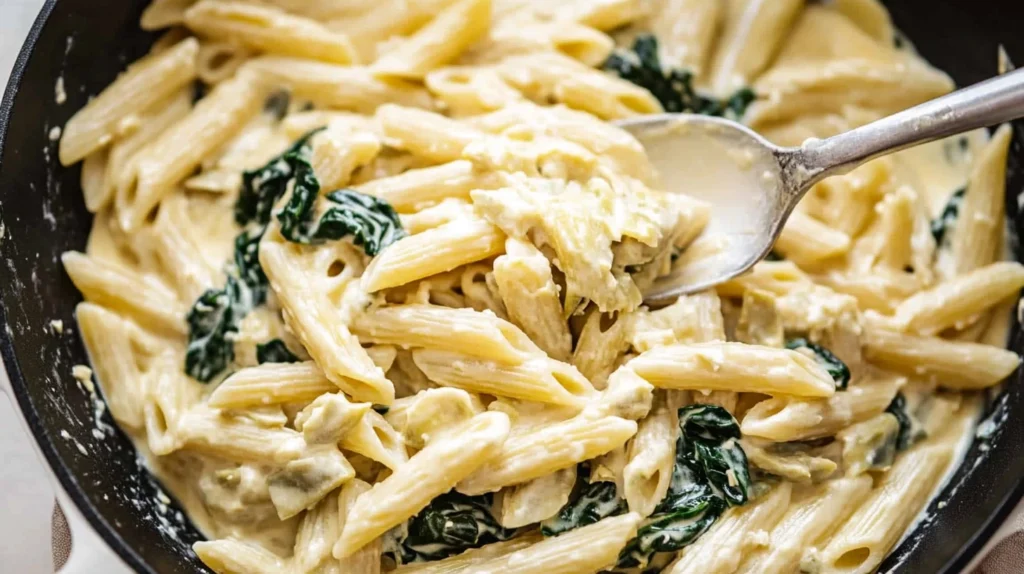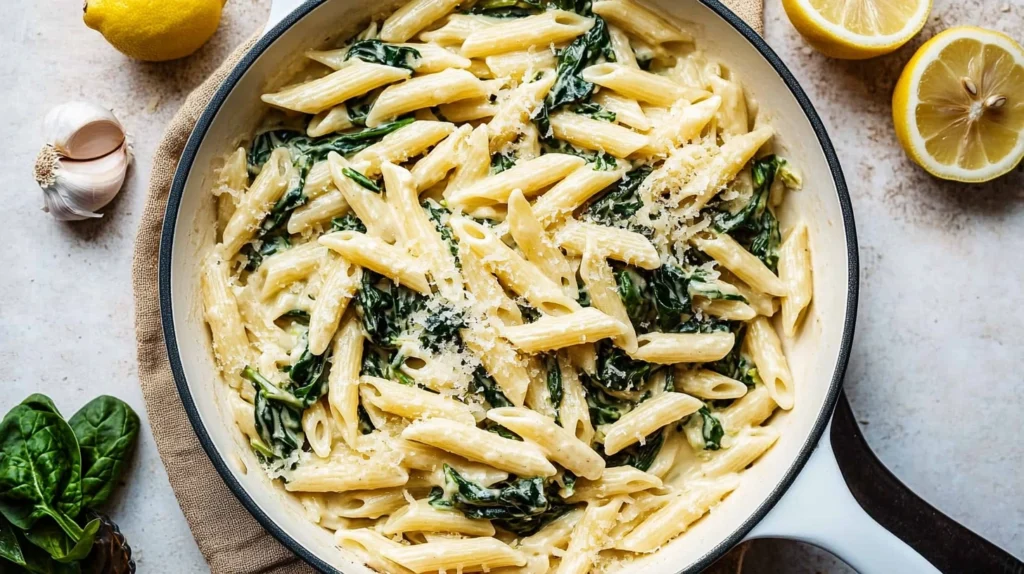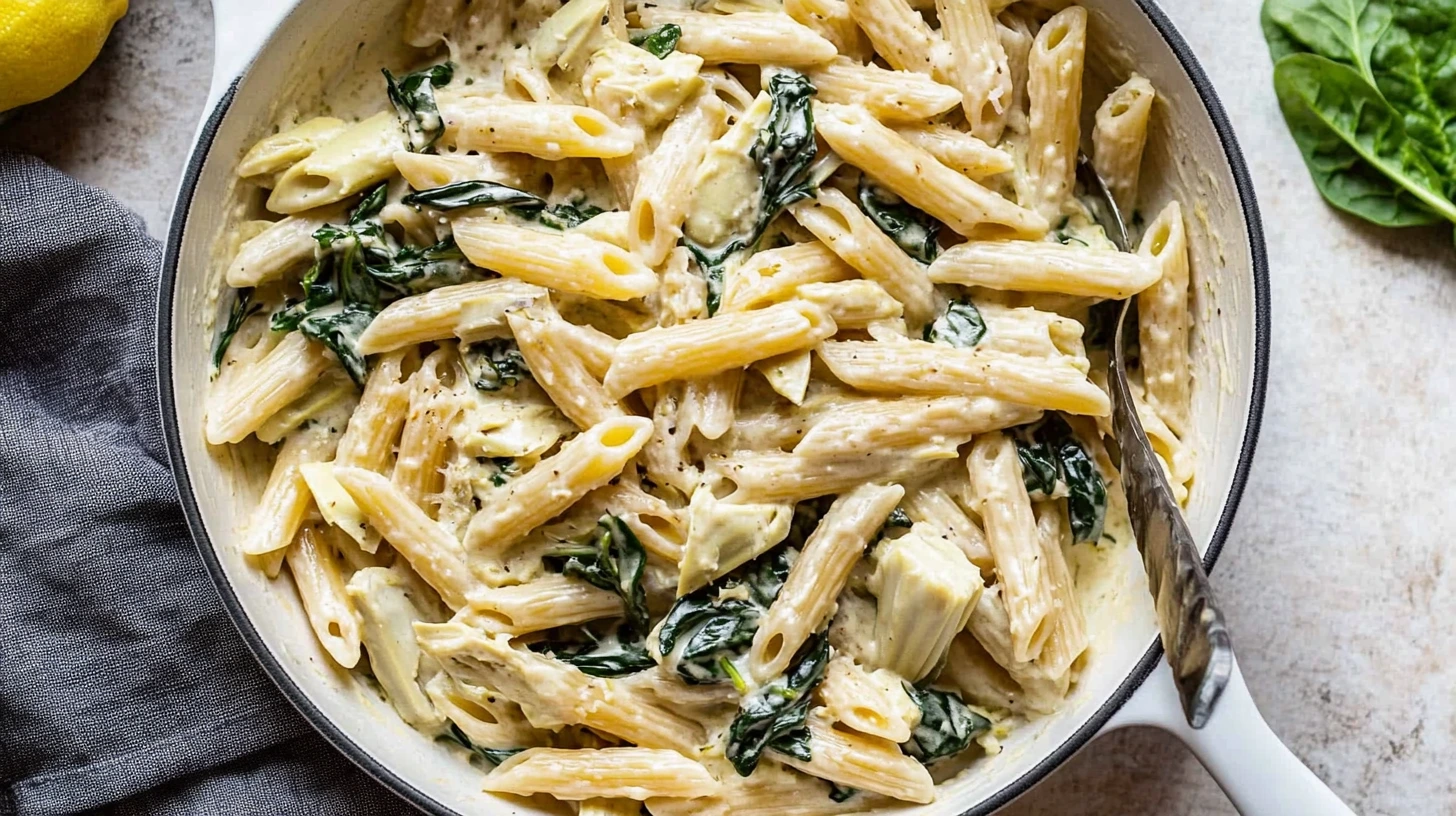In my kitchen growing up, pasta night was sacred. There was something so comforting about a steaming bowl of noodles topped with rich sauce. But when I shifted to a paleo lifestyle, I quickly realized most traditional pastas were off-limits. No grains, no gluten, no preservatives.
That challenge sparked creativity, leading to what I now call the paleo pasta revolution. From spiralized vegetables to almond and cassava flour noodles, there’s now a way to enjoy pasta on paleo terms, without sacrificing taste or texture.
Here at LovinRecipes, we’ve turned that nostalgic love for pasta into a modern, wholesome approach, one that’s grain-free, nutrient-dense, and endlessly satisfying.
Looking for more comfort food remakes? Try our sweet potato ukoy with palabok recipe, a savory twist on a traditional dish.
Click to Access the Table of Contents:
Table of Contents
What is Paleo Pasta?
What Makes Pasta Paleo-Friendly?
To be paleo, pasta must be made without grains, legumes, dairy, or processed flours. That means no wheat, no rice, and definitely no chickpeas. Instead, paleo pasta uses clean ingredients like:
- Spiralized zucchini or sweet potato
- Cassava flour or almond flour
- Coconut flour or arrowroot starch
These options are lectin-free, grain-free, and nutrient-rich, making them perfect for paleo meals.
Why Traditional Pasta Doesn’t Fit the Paleo Diet
Regular pasta, even gluten-free kinds, are usually made from:
- Grains (wheat, rice, corn)
- Legumes (chickpeas, lentils)
- Additives or binders (xanthan gum, soy flour)
These are not compliant with the paleo philosophy, which focuses on ancestral eating and whole foods.
Benefits of Paleo Pasta Over Conventional Types
Switching to paleo pasta isn’t just about avoiding grains. It also means:
- Better digestion from lower-carb, grain-free ingredients
- More nutrients from vegetables, nuts, and roots
- Fewer blood sugar spikes thanks to clean, slow-burning carbs
- No processed junk—just whole ingredients
Don’t miss our dense bean salad recipe, another great option if you’re exploring paleo-friendly legumes and fiber.

Paleo Pasta with Spinach and Artichokes
EQUIPEMENTS
- Large pot for boiling pasta
- Large skillet
- Wooden spoon or spatula
- Chef’s knife
- Cutting board
- – Measuring cups and spoons
INGREDIENTS
- 8 oz grain-free penne pasta Jovial Foods or preferred paleo brand
- 3 tablespoons olive oil
- ½ medium onion diced
- 4 cloves garlic minced
- 8 oz almond milk cream cheese dairy-free
- ⅓ cup broth chicken or vegetable
- 1 tablespoon fresh lemon juice
- 2 teaspoons Dijon mustard paleo-compliant
- 4 –5 cups baby spinach
- 1 12 oz can artichoke hearts, drained and roughly chopped
- Sea salt and black pepper to taste
INSTRUCTIONS
- Cook the grain-free pasta according to package instructions. Drain and set aside.
- While pasta cooks, heat olive oil in a large skillet over medium heat. Add diced onion and cook for about 1 minute.
- Add garlic and cook for another 30–60 seconds until fragrant.
- Add the broth, almond milk cream cheese, lemon juice, and Dijon mustard. Stir until smooth and combined. Season with salt and pepper.
- Add spinach and artichoke hearts. Cook for 1–2 minutes, just until the spinach wilts.
- Toss cooked pasta into the skillet with the sauce. Mix well and serve warm. Adjust seasoning as needed.
NOTES
- Use a paleo-certified Dijon mustard to keep it compliant.
- Add grilled chicken or turkey sausage for extra protein.
- Reheat gently with a splash of broth or almond milk to loosen the sauce.
Best Paleo Pasta Alternatives
Spiralized Vegetables
Zucchini noodles (zoodles), sweet potato spirals, and carrot ribbons are top paleo picks. They’re:
- Naturally grain-free
- Low in carbs and calories
- Quick to prepare with a spiralizer
Zoodles are the go-to for creamy sauces, while sweet potato noodles hold up beautifully in hearty meat sauces.
Cassava, Almond, & Coconut Flour Pasta
These are the closest to traditional pasta in taste and texture. They’re made from:
- Cassava flour: neutral taste, pliable texture
- Almond flour: nutty flavor, higher in protein
- Coconut flour: absorbent, best combined with other flours
You can make your own or buy from brands that keep it 100% paleo (no rice or starch fillers).
Discover great ideas like our sweet potato ukoy with palabok for another root-based recipe.
Paleo Pasta vs. Gluten-Free & Grain-Free Options
Is Gluten-Free the Same as Paleo?
Not at all. Gluten-free pastas often contain:
- Corn flour
- White rice flour
- Potato starch
- Chickpea or lentil flour
These may be grain-free, but they aren’t paleo-compliant because they’re either legumes or highly processed.
Comparing Paleo Pasta to Chickpea, Lentil, and Rice Noodles
| Type | Paleo-Friendly? | Why / Why Not |
|---|---|---|
| Chickpea Pasta | No | Legumes are excluded from paleo |
| Lentil Pasta | No | Also legumes, high in lectins |
| Rice Noodles | No | Rice is a grain, not allowed on paleo |
| Zucchini Noodles | Yes | Vegetable-based, 100% compliant |
| Cassava Pasta | Yes | Root-based, gluten-free and grain-free |
| Almond Flour Pasta | Yes | Paleo-safe and rich in protein |
Learn more about how paleo differs from gluten-free with our overnight paleo oats, a clean breakfast option.
Creamy Paleo Pasta with Spinach & Artichokes
Ingredients
- 8 oz grain-free penne pasta (Jovial Foods or paleo-approved brand)
- 3 tablespoons olive oil
- ½ medium onion, diced
- 4 cloves garlic, minced
- 8 oz almond milk cream cheese (or any dairy-free, paleo-friendly cream cheese)
- ⅓ cup broth (chicken or veggie, paleo-approved)
- 1 tablespoon fresh lemon juice
- 2 teaspoons Dijon mustard (sugar-free, paleo-compliant)
- 4–5 cups fresh baby spinach
- 1 (12 oz) can artichoke hearts, drained and chopped
- Sea salt and black pepper, to taste
Step-by-Step Instructions
Step 1: Cook the paleo pasta according to the package instructions. Drain and set aside.
Step 2: While the pasta cooks, heat olive oil in a large skillet over medium heat. Add diced onion and sauté for about 1 minute. Add minced garlic and cook for 30–60 seconds, until fragrant.
Step 3: Stir in broth, almond milk cream cheese, lemon juice, and Dijon mustard. Whisk or stir until smooth and creamy. Season with sea salt and pepper.
Step 4: Add spinach and artichoke hearts to the skillet. Cook for 1–2 minutes, just until the spinach wilts.
Step 5: Add cooked pasta into the skillet and toss everything together. Adjust seasoning if needed and serve warm.

Storage & Serving Notes
- Refrigerate leftovers in an airtight container for up to 3 days.
- Reheat gently on the stovetop with a splash of broth or almond milk to loosen the sauce.
- Serve with grilled chicken or roasted veggies for a full paleo meal.
Perfect Pairings & Paleo Pasta Sauce Ideas
Complementary Paleo Sauces
- Garlic Avocado Pesto – great for zucchini or almond flour pasta
- Coconut Cream Alfredo – blend coconut milk, garlic, lemon, and nutritional yeast
- Tomato Basil Sauce – simmer chopped tomatoes with herbs and olive oil
Best Protein Additions
- Grilled chicken breast or turkey sausage
- Sautéed shrimp or wild salmon
- Beef sausage for bold, savory flavor
Don’t miss our beef sausage recipe—ideal with creamy paleo pasta!
Where to Buy Paleo Pasta
Best Paleo-Friendly Brands
If you’re short on time, there are some great ready-made paleo pasta brands to explore:
- Jovial Foods Cassava Pasta – clean ingredients, solid texture
- Capello’s Almond Flour Pasta – freezer section, rich flavor
- Paleo Pasta Co. – grain-free and lectin-free options
Look for products labeled grain-free, legume-free, and no added gums or starches.
What to Look for on the Label
When shopping, read closely and avoid:
- Chickpea, lentil, or rice flours (not paleo)
- Xanthan gum, guar gum, or soy
- Enriched starches like tapioca or corn
Go for: cassava, almond, coconut, or root vegetable-based options.
Learn more about clean ingredients in our chopped almonds and Asian sauce recipe.
Common Mistakes When Making Paleo Pasta
Even the best recipes can go wrong. Avoid these paleo pasta pitfalls:
1. Overcooking the Noodles
Paleo pasta cooks faster, check it early, and rinse with cold water after draining to stop cooking.
2. Using Non-Compliant “Grain-Free” Products
Not everything labeled grain-free is paleo. Avoid legumes like chickpeas and lentils—those aren’t paleo-friendly.
3. Skipping Rest Time in Homemade Dough
Let the dough rest! This improves texture and prevents cracking when you roll and cut.
4. Using Too Much Almond or Coconut Flour
Balance is key, too much can cause dry, crumbly dough. Combine with cassava or arrowroot for better consistency.
How to Introduce Paleo Pasta Into Your Weekly Meals
Easy Weeknight Ideas
- Toss zucchini noodles with avocado pesto and grilled chicken
- Use cassava penne in a quick tomato and spinach skillet
- Try almond flour lasagna sheets with dairy-free béchamel
Batch Cooking & Meal Prep Tips
- Double your dough and freeze extra for later
- Store cooked paleo pasta in containers for quick reheating
- Pre-chop veggies and protein so dinner takes 10 minutes max
Looking for inspiration? Try our overnight paleo oats to balance your week of clean eating.

Conclusion: Paleo Pasta is the Comfort Food You’ve Been Waiting For
Whether you miss fettuccine, penne, or lasagna, paleo pasta offers a clean, flavorful way to enjoy your favorite dishes—grain-free and guilt-free. With endless combinations of noodles, sauces, and protein-packed toppings, it’s never been easier to eat clean and stay satisfied.
Check out our dense bean salad recipe for a paleo-friendly side to pair with your next pasta night.
Paleo Pasta FAQs
What is a paleo substitute for pasta?
Zucchini noodles, cassava pasta, almond flour pasta, sweet potato noodles, and spaghetti squash are all great paleo substitutes.
Can I eat chickpea pasta on a paleo diet?
No. Chickpeas are legumes and are not allowed on a paleo diet.
What pasta doesn’t have lectins?
Pasta made from cassava, almond flour, or vegetables like zucchini is lectin-free and paleo-friendly.
Can I have rice noodles on paleo?
No. Rice is a grain and not compliant with paleo guidelines.
For more delicious recipes follow me on :
- Facebook: @LovinRecipes
- Instagram: @LovinRecipes

